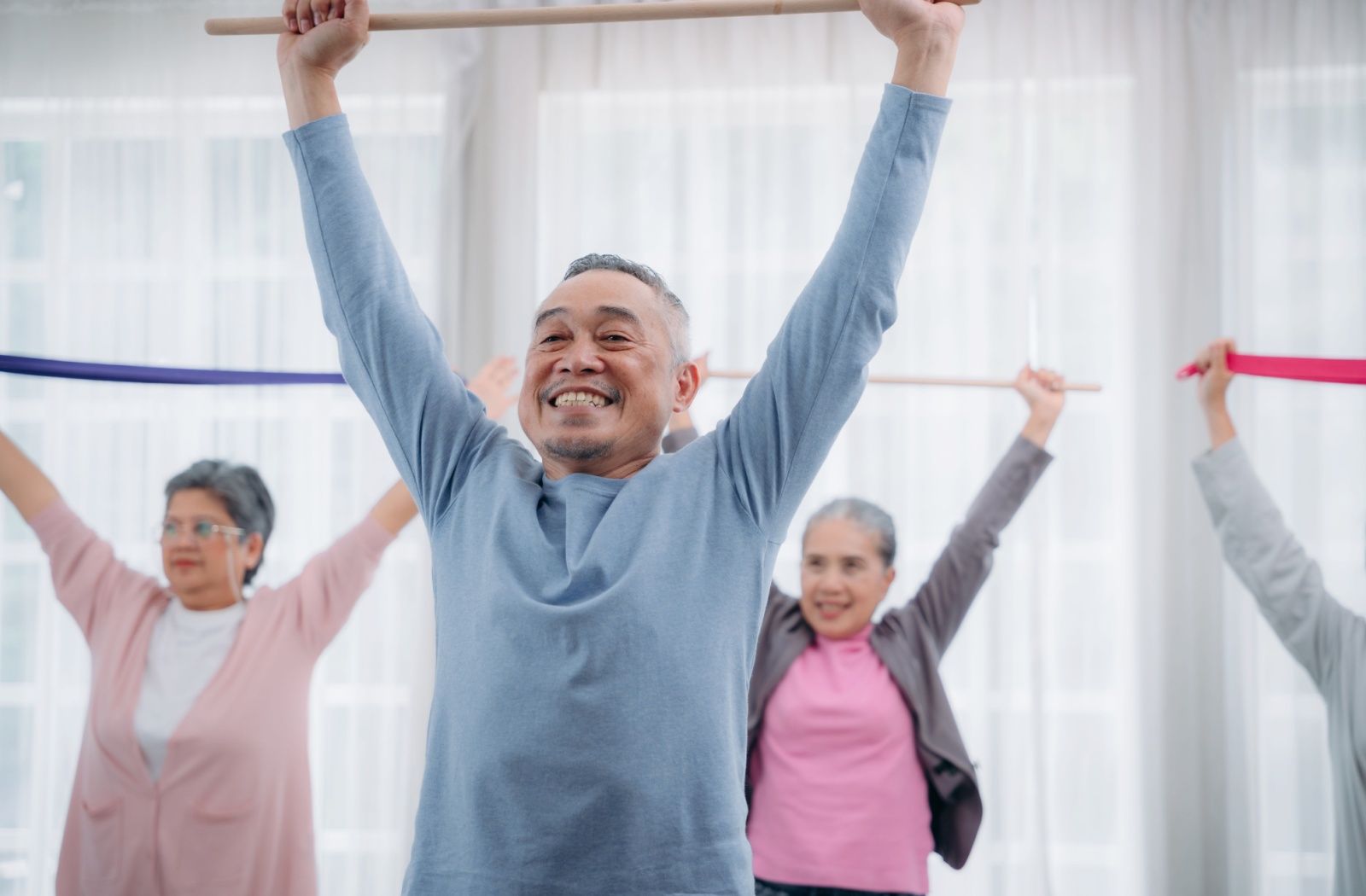Independence is valuable for older adults. However, many seniors face a higher risk of trips, falls, and slips—and all of these risks can compromise a person’s ability to stay independent. This means finding ways to maintain mobility is a core part of staying independent.
Fortunately, occupational therapy (OT) can help. OT involves a range of tailored activities designed to help seniors stay upright, stable, and mobile. With targeted treatments designed to improve balance and reduce fall risk, OT can be an incredible way to help an older loved one stay independent.
The Basics of Occupational Therapy
Occupational therapy is all about doing exercises that target muscle strength and coordination. Each exercise is designed to train a different aspect of an older adult’s everyday abilities so that they can stay safer in their daily life.
OT exercises help with tasks like:
- Moving from one place to another
- Getting dressed and undressed
- Using utensils for eating
- Holding and gripping objects securely
- Performing personal hygiene tasks like brushing teeth or combing hair
By building strength and stability, seniors gain the tools they need to navigate their daily lives.
Sensory Techniques to Sharpen Mobility
OT uses sensory techniques to bridge the mind and body for balance improvement. These interventions engage different systems throughout the body to strengthen how your loved one processes sensory cues, thereby helping them stay safer in their everyday life.
Some popular options include:
- Using objects like textured boards sharpens walking reflexes on uneven surfaces.
- Exercises like seated rocking hone balance perception by engaging the vestibular system.
- Following a moving object with the eyes combines visual focus with steady posture.
These techniques help seniors handle unexpected movements or terrain with greater ease.
Postural Adjustments for Better Stability
How your loved one carries their body can greatly influence their balance. Adjusting posture and improving alignment reduces strain and distributes weight better.
Some ideal OT exercises to improve posture include:
- Core stability exercises to strengthen the muscles that older adults need for a straight, supportive posture.
- Mirror training helps seniors practice self-correction by observing the alignment of their own bodies.
- Transition drills, like standing up from various chair angles, enhance coordination.
By focusing on posture, seniors can strengthen the muscles that they need to stay upright. This can help them reduce the risk of falls and feel more confident in their everyday movements.
Tools to Improve Safety
Adaptive equipment can provide seniors with the extra tools they need to go about their daily lives without fear of mobility challenges. OT professionals often recommend devices designed to make daily tasks easier on a person’s body.
Some ideal senior-friendly ergonomic tools include:
- Walkers and canes to provide support while walking.
- Grab bars in the bathroom to add peace of mind during slippery conditions.
- Shoes with non-slip soles to ease walking on smooth surfaces.
- Reachers or grabbers to retrieve items from high or hard-to-reach places.
- Raised toilet seats to reduce the effort required for sitting and standing.
- Comfortable, supportive cushions to reduce pressure when sitting.
These tools can restore independence and a sense of safety to seniors in need. They make it much easier to follow a daily routine and work through everyday tasks—while removing barriers and challenges that put your loved one at risk.
Training to Build Balance
One of the most practical OT interventions involves balance exercises. These exercises help strengthen the muscles that are needed to stay upright in daily life. With regular balance exercises, your loved one can significantly reduce their risk of slips and falls, restoring their—and your—peace of mind.
Some ideal senior-friendly balance exercises include:
- Standing on one foot to improve stability
- Heel-to-toe walk to enhance coordination
- Side leg raises to strengthen key muscles
- Chair sit-to-stand exercises for building lower body strength

Functional Daily Training
Functional exercises simulate daily activities to help seniors move through their regular routines safely and successfully. Though they may seem simple, they help preserve your loved one’s ability to perform everyday tasks.
Functional exercises tend to include:
- Carrying light objects to mimic grocery shopping
- Reaching overhead to simulate placing items on a shelf
- Bending down to pick up objects from the floor
- Turning or twisting motions for improved flexibility
- Walking with slight directional changes to enhance balance and coordination
Functional exercises focus on everyday actions, making the transition from therapy to real life seamless.
OT Opportunities in Assisted Living
Assisted living offers options for seniors to enjoy hands-on, structured occupational therapy in a supportive environment. Communities like ours at All American Assisted Living at Enfield prioritize the health and well-being of every resident here.
That’s why we offer:
- An on-site team of physical therapists and physiologists
- 24/7 access to personal care and a team of nursing professionals
- Health assessments, medication management, and support groups
- Access to all kinds of services, amenities, programs, and more
Through structured programs, supportive environments, and our incredible on-site teams, we work hard to make it easier than ever to stay independent.
A Safer Lifestyle Awaits
Occupational therapy doesn’t just help with balance. It transforms how seniors interact with their environment. With these strategies, your loved one can work towards a safer and healthier everyday life—just like they deserve.
To learn more about how OT and assisted living can support your loved one, contact our team here at All American Assisted Living at Enfield. Our incredible team is waiting to help your loved one live a healthier, safer, more supported lifestyle. Schedule a visit with us today!





